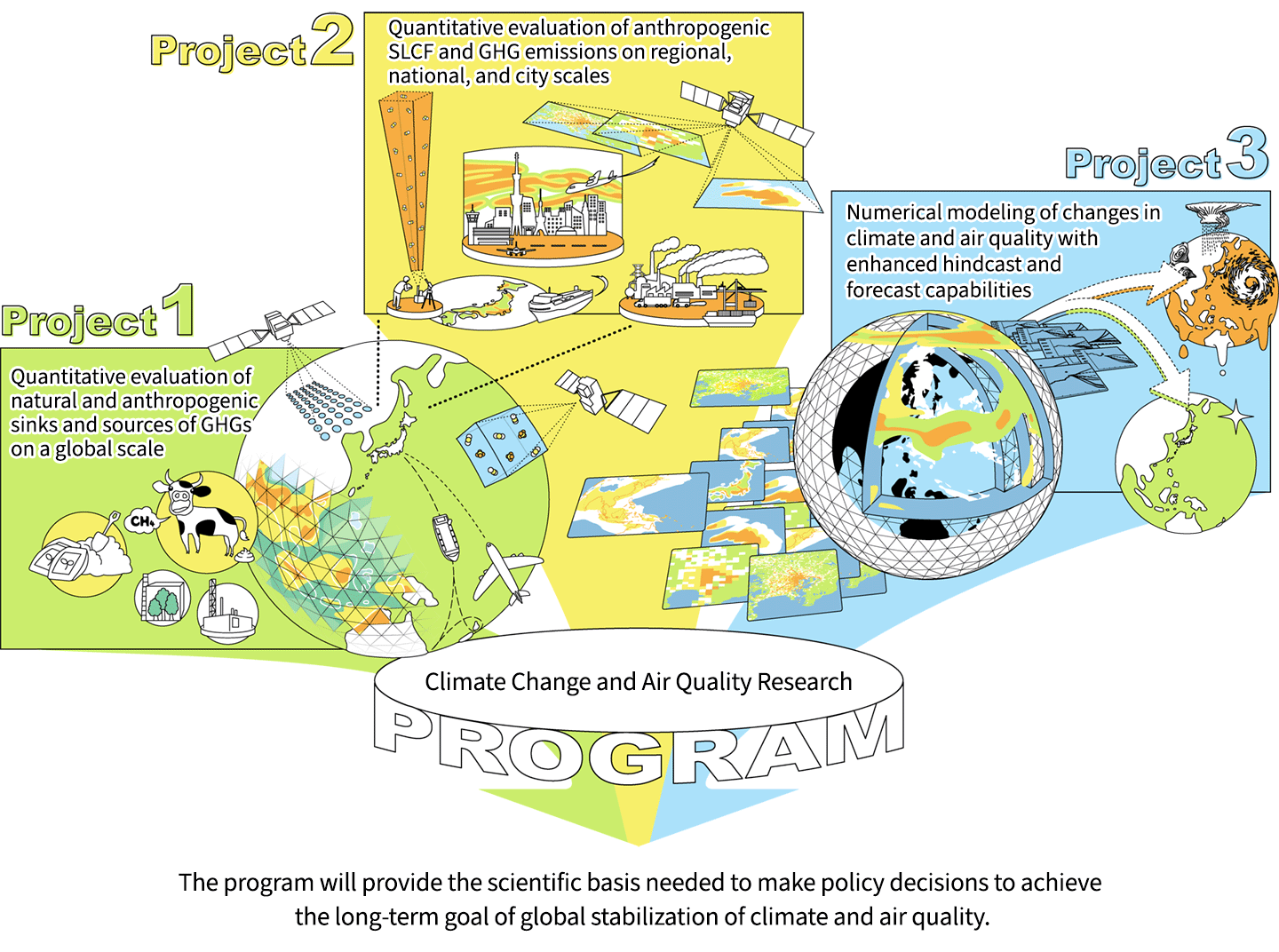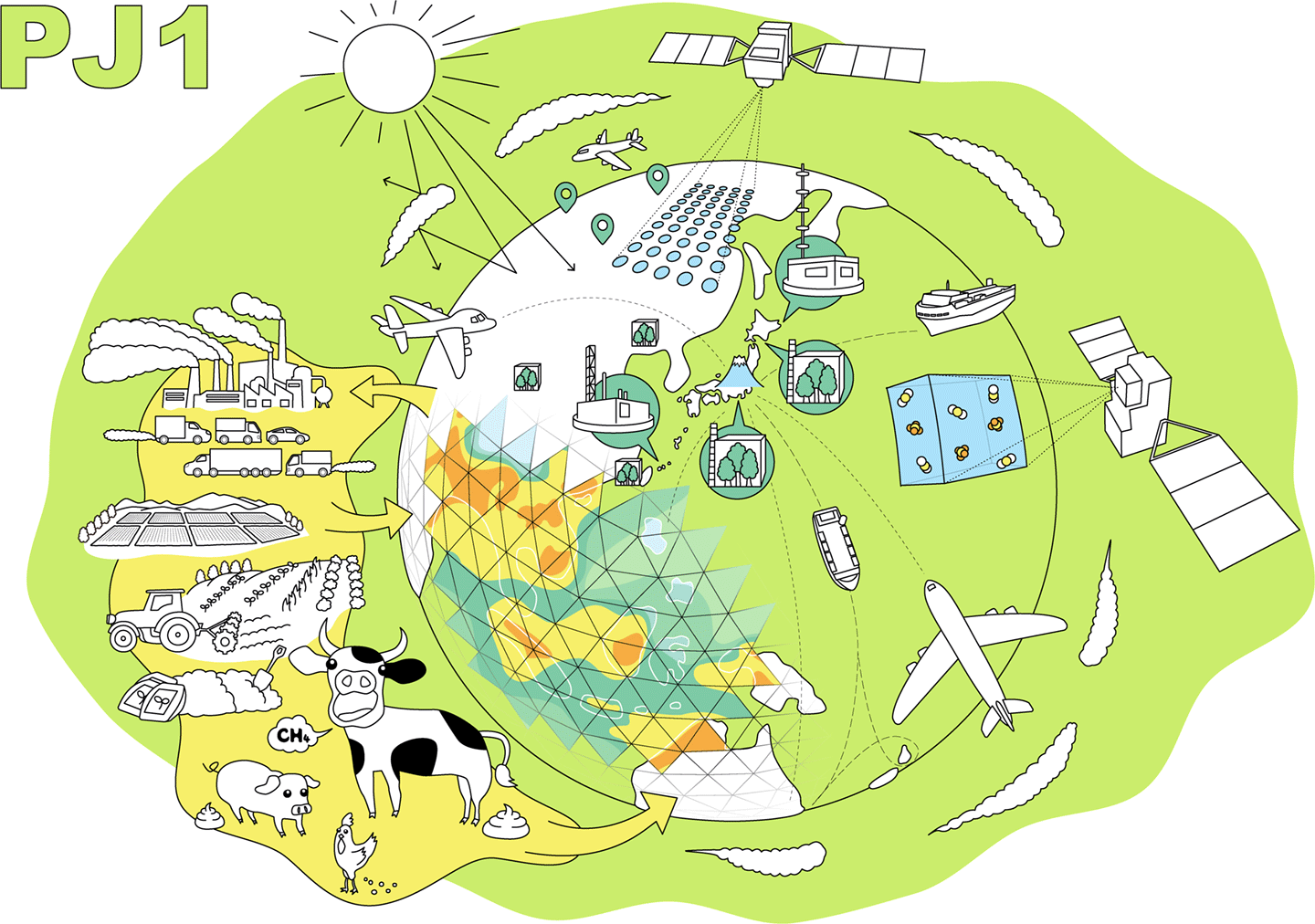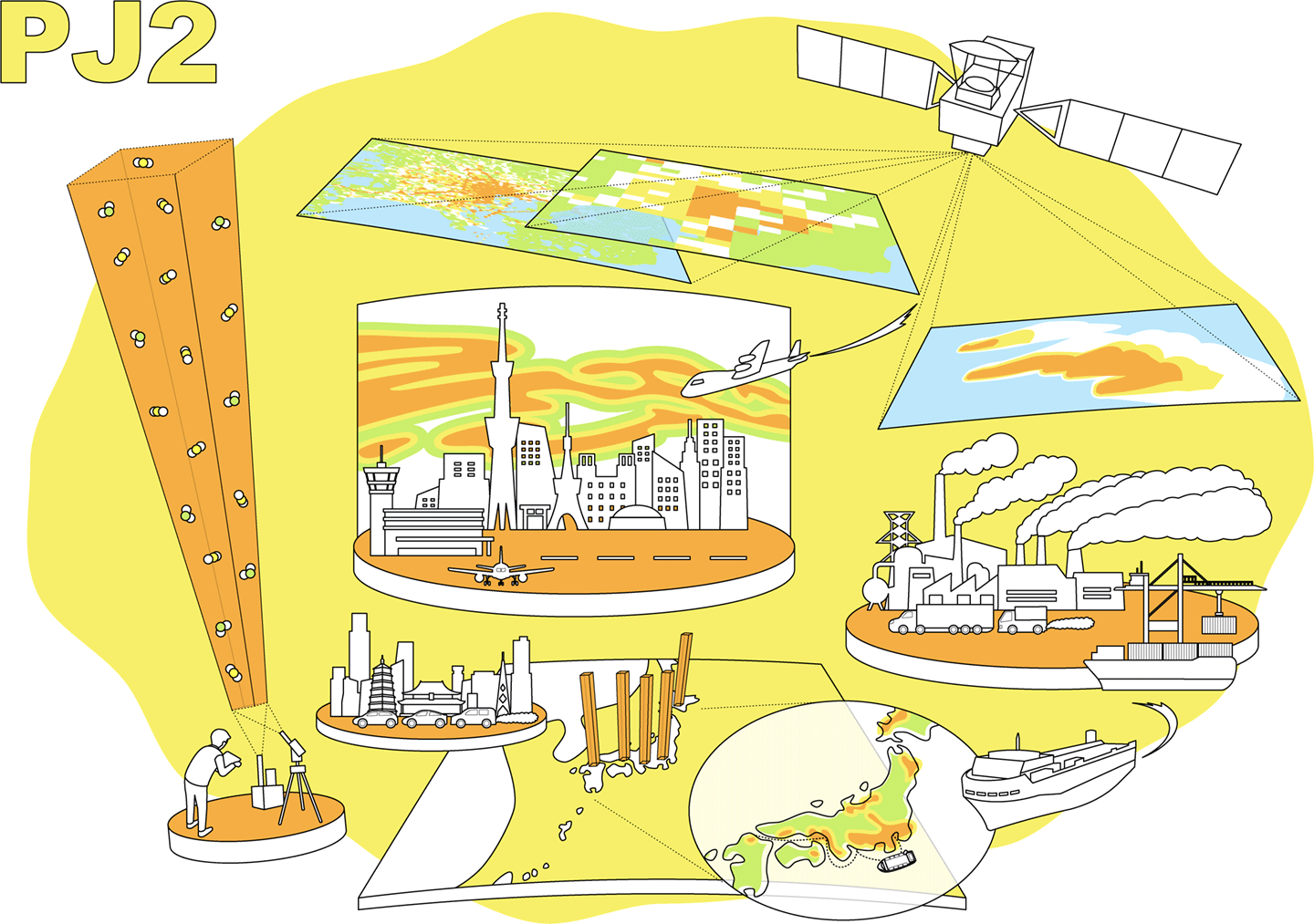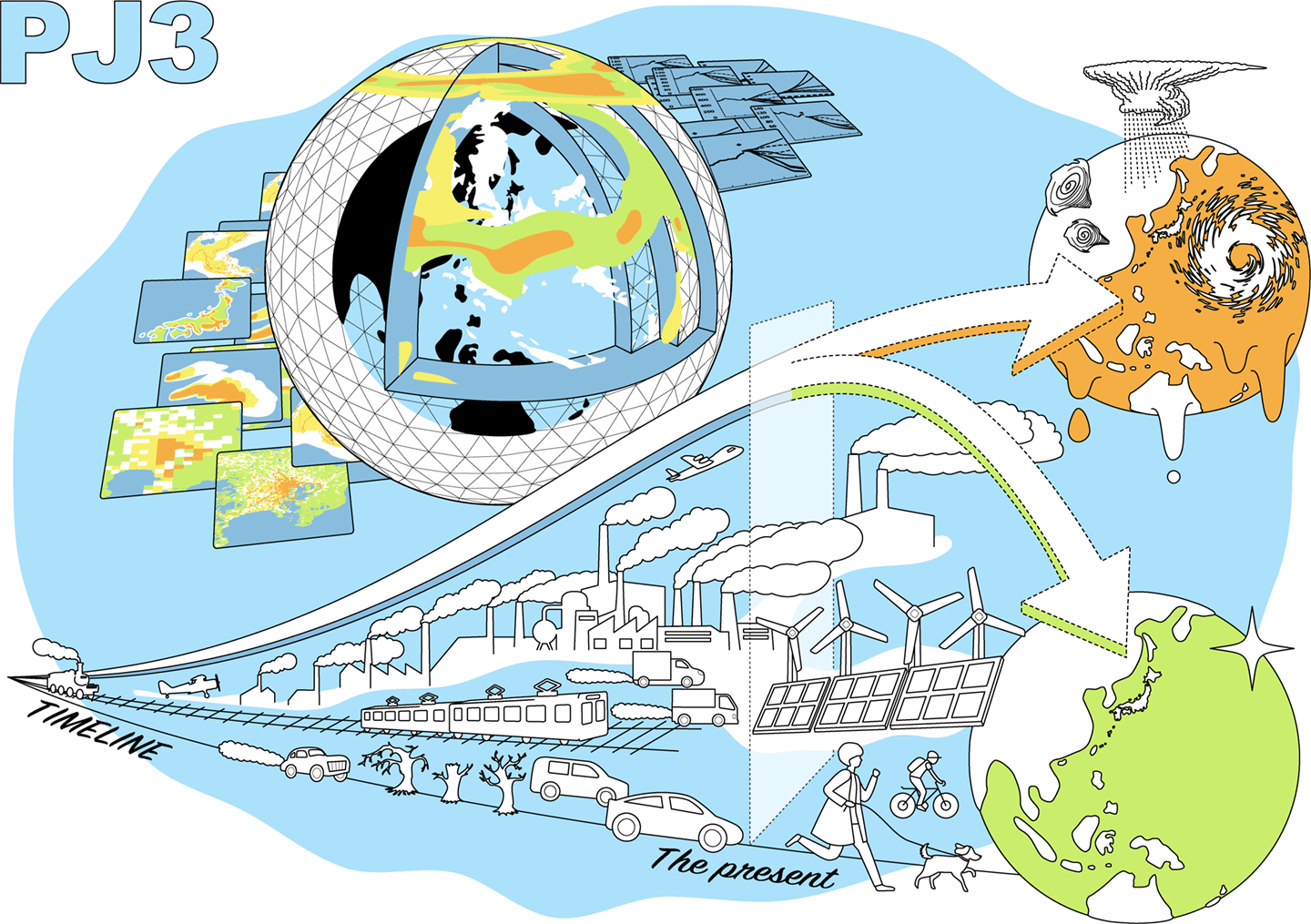We aim for a prompt verification of the reduction in GHGs (greenhouse gases) and SLCFs (short-lived climate forcers) emissions by quantitative evaluations of the emissions inventories at the national and city levels. Furthermore, we will improve the accuracy of hindcast and forecast of the changes and variability of climate and air quality by the state-of-art modeling that takes into account the latest emission estimates. Overall, we will provide the scientific basis that is necessary to make policy decisions, such as mitigation measures, to achieve the long-term goal of net-zero GHG emissions by 2050.
The program consists of three projects (PJs) and will focus on the following specific areas.





